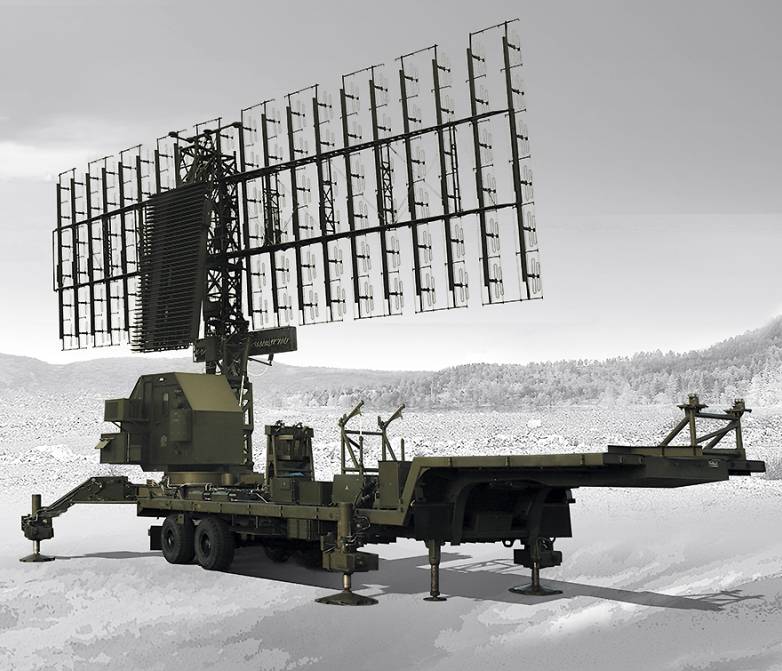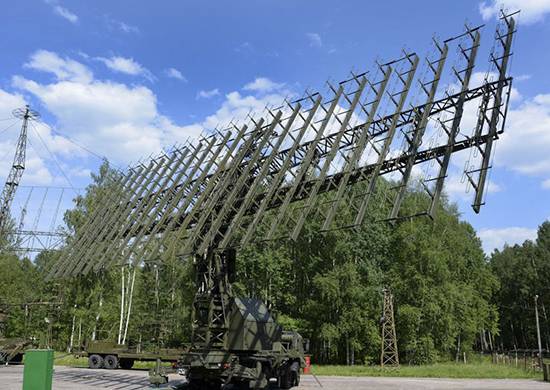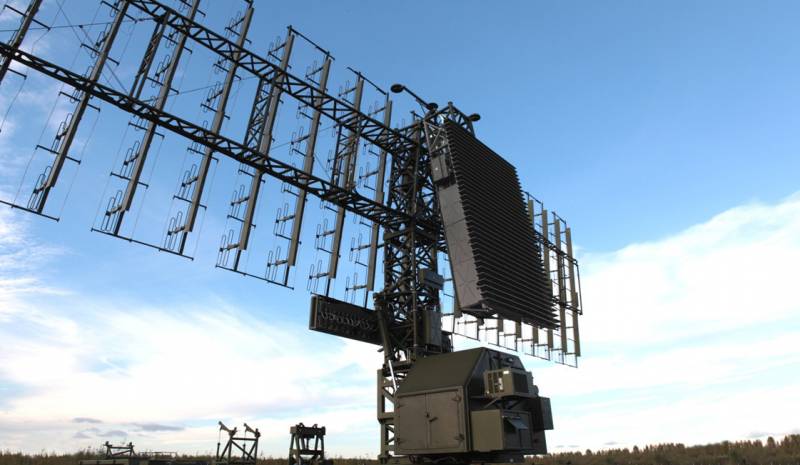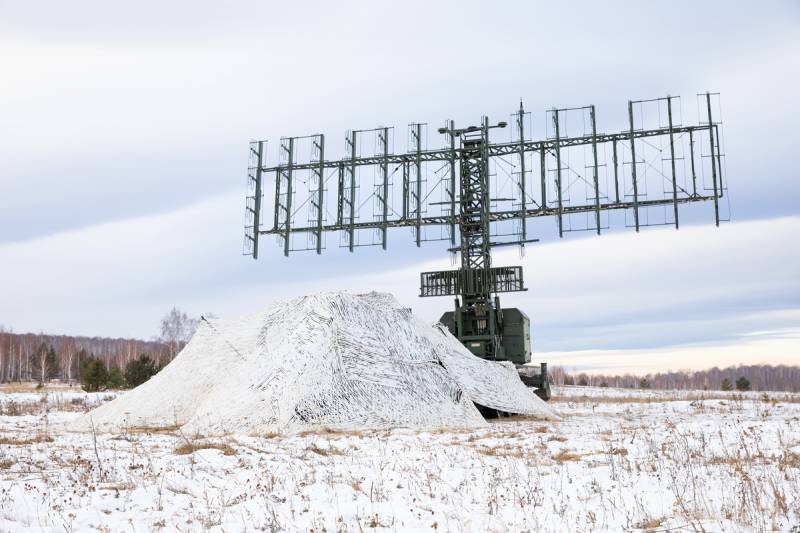Radar stations "Niobium" for the Aerospace Forces and the ground forces

Since 2017, the Russian aerospace forces and ground forces have been receiving serial radar stations of the Niobium line. This technique is intended to enhance air defense and expand its capabilities. Mobile design and high technical characteristics make such radars a highly effective means of monitoring the air situation and detecting targets.
Prospective samples
The project "Niobium" or "Sky-UM" was developed by the Federal Research and Production Center "Nizhny Novgorod Research Institute of Radio Engineering" (FSPC NNIIRT), which is part of the Concern VKO "Almaz-Antey". The Niobium project was based on developments from the Sky family projects, which was reflected in the alternative designation. It was supposed to keep the main architectural and design solutions and at the same time introduce modern components and assemblies that ensure the growth of all the main characteristics.
At the same time, two versions of the new radar were developed for different customers, which had certain differences from each other. The first, designated as 55ZH6UM, was intended for air defense units of the aerospace forces. The second received the designation 1L125 "Niobium-SV" and was created taking into account the requirements of military air defense. In addition, the appearance of the export versions of the two radars was worked out.
The main design work on products was completed at the beginning of the tenth years, and in 2013-15. NNIIRT produced the necessary prototypes. They passed a full range of tests and trial operation in the troops, after which they received a recommendation for acceptance for supply.
In 2016-17 The Ministry of Defense has placed the first orders for the production and supply of two new types of radars. The transfer of the first products to the Aerospace Forces and the ground forces began in 2017 and continues to this day. There are official reports on the delivery of new batches of equipment to various parts on a regular basis. For example, recently it became known that last year the Niobium stations arrived in parts of the Eastern Military District.

Station for videoconferencing
Product 55ZH6UM / "Niobium" / "Nebo-UM" is a mobile radar of medium and high altitudes on duty. In terms of its architecture and appearance, it is similar to the previous Nebo stations, but differs in a different composition of equipment and improved performance.
The main units of "Niobium" are mounted on semi-trailers and wheeled chassis. One of the semi-trailers carries a swivel base with a folding active phased antenna array. The transfer from traveling to working position is carried out automatically using hydraulics. Other chassis accommodate a cabin with calculation points, power supply facilities, etc. When deployed, different station facilities can be located at a considerable distance from each other. Deployment in position takes 5 hours.
On one antenna device of the station, there are two APAA based on solid-state transceiver elements at once. The larger grille acts as a range finder, while the smaller array on its back acts as an altimeter. The antenna rotates to provide circular scanning in azimuth. In elevation, electronic scanning.
The radar simultaneously uses two bands. The rangefinder works in meters, which ensures high range and altitude. The altimeter uses decimeter waves, which gives the required measurement accuracy. The use of two bands also improves the noise immunity of the station.
"Niobium" is intended to detect and track aerodynamic and ballistic targets. There are also functions for determining the nationality of an air object and direction finding sources of radio interference. Data processing is carried out automatically with the subsequent issuance of ready-made information to consumers.
The characteristics of the Nebo-UM radar for the domestic customer are unknown, but the parameters of the export product 55Zh6UME have been published. It has a maximum detection range of 600 km and an altitude of up to 80 km. A target with an EPR of 1 sq.m is detected from 430 km. The maximum target speed is 8000 km / h. The electronics of the complex simultaneously processes up to 200 traces.
Army Air Defense
The Niobium-SV radar for military air defense is built on the same principles as the 55Zh6UM, but has a number of differences related to the operation features. So, all the facilities of this complex are placed on automobile chassis to increase mobility and reduce the time of preparation for work. The possibility of deployment at spaced positions using cable and radio communication has been retained.
Radar 1L125 received a redesigned antenna device. First of all, it is distinguished by the smaller sizes of the rangefinder and altimeter canvases, corresponding to the limitations of the carrier machine. The layout has also changed: both AFARs are directed in the same direction.
The complex for military air defense is characterized by reduced characteristics. So, for the export version of Niobium-SV, the maximum detection range of 400 km and an altitude of up to 40 km are declared. The number of simultaneously processed traces has also been reduced.
New opportunities
Two new Niobium radars are of great interest to the army and have already found their place in the units of military and object air defense and missile defense. They contribute to the security of air borders and show the required efficiency. Such results have been achieved due to a number of important features and capabilities of the stations.
"Niobium" of two types, like the basic "Sky", is carried out in a mobile or mobile form. Car chassis and semi-trailers make it easier to transfer equipment to a new position. Standards for the time of deployment and preparation for work generally meet the requirements of the operating troops. Stations can be deployed in areas without radar cover or supplement the existing radar network, providing solutions to urgent problems.
High technical characteristics allow the stations to effectively monitor a large area and timely detect the entire range of relevant threats - at a great distance and at a considerable height. Products 55Zh6UM and 1L125 are capable of detecting aircraft and helicopters, high-precision weapons, UAVs and ballistic missiles. Also declared is the possibility of detecting and tracking stealth aircraft at ranges up to hundreds of kilometers. Of great interest is the function of identifying sources of interference.
Provided flexibility in the use of the collected information. "Niobium" can issue data to a higher command post for further processing and transmission to consumers. It also provides for the possibility of direct communication with anti-aircraft systems, which reduces the time from detection to hitting the target.
Thus, the modern "Niobium" in two modifications, like the later versions of the "Sky", is a highly effective universal means of illuminating the air situation, detecting and targeting. These radars are suitable for use in various types of air defense and can be used in non-strategic missile defense. In general, we are talking about a universal tool with high technical characteristics.
Stations in service
Serial production and delivery of Niobium stations of both versions began several years ago. Over the past time, according to the Ministry of Defense, the army has received several dozen complexes for the Aerospace Forces and the ground forces. Export deliveries have not yet been reported, but radar and promotional materials are regularly shown at various exhibitions and it is quite possible that a foreign customer will be found in the future.
Apparently, deliveries of new Niobium stations will continue over the next years, which will allow re-equipping the following units and subunits of the two military branches. Thanks to this, the armed forces will be able to strengthen the radar field in some directions, incl. with the ability to maneuver and change its configuration. The positive results of this are obvious.


Information